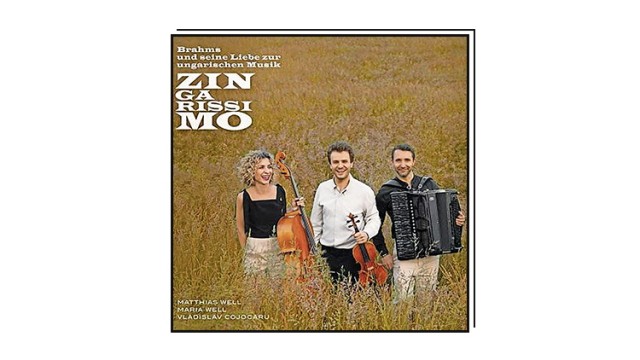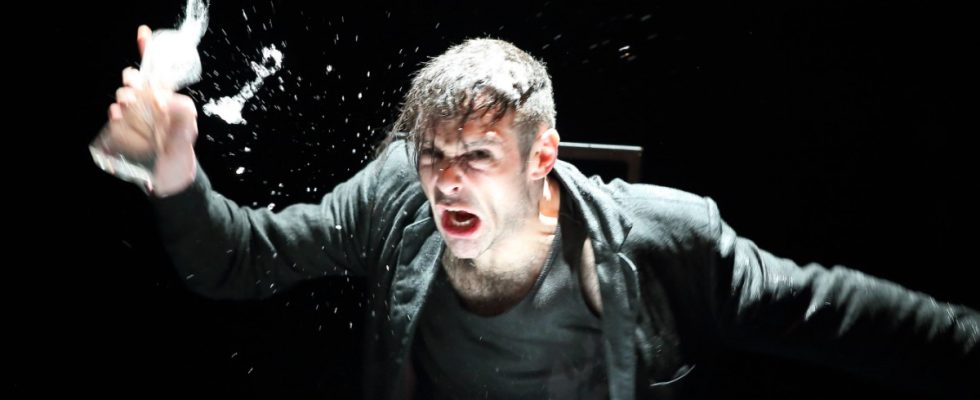Crime thriller: “The Bad Father”
Christof Weigold: The bad father. Kampa Verlag, 624 pages, 28 euros.
(Photo: Publisher)
The first crucial clue in this crime story comes from none other than Charlie Chaplin. In the chic restaurant Musso & Frank on Hollywood Boulevard, where the stars meet for lunch and the steaks are grilled over an open fire in the middle of the restaurant, private detective Hardy Engel interviews the film star. And finds out about an affair and a shooting on a yacht.
“The Bad Father” (Kampa Verlag, 624 pages, 28 euros) takes place in Los Angeles in 1929. The book is the fourth volume in the Hardy Engel series, but you can also read it without any prior knowledge. The author Christof Weigold wrote for the Harald Schmidt Show in the 1990s, and today he writes Hollywood crime novels. Actually, it is of course strictly forbidden to follow in the footsteps of Raymond Chandler. But Weigold has found a good trick to infiltrate himself and his hero into the golden age of the American film industry: Hardy Engel is also German, a veteran of the First World War who comes to California in search of fortune. His desired acting career doesn’t work out, but he succeeds as a private detective.
His cases take him into the depths of the entertainment industry; Weigold has researched the historical framework very well and weaves it elegantly into the cases. This time Hollywood is on the verge of a revolution: the sound film is replacing the silent film, and the new art form and its demands are much more worrying for Charlie Chaplin than the shot on the yacht.
The characters in this story include, above all, a German family from the most Swabian region of Swabia – from Laupheim. From there, Carl Laemmle emigrated to the USA, where he became one of the founding fathers of Hollywood with his Universal Studios. The detective Hardy Engel has already had a run-in with him, in the first case, and the Laemmles aren’t making his life easy this time either. Laemmle’s son, Carl Junior, is currently in the process of the To film bestsellers of the late twenties. To do this, he absolutely needs the advice of a German veteran who has experienced the horror of the trenches. The title of the novel that he really wants to bring to the screen: “Nothing New in the West.” David Steinitz
Radio play: “War and Peace”

Available again as an ARD podcast: the twelve-hour radio play “War and Peace” from 1967.
(Photo: ARD)
History doesn’t repeat itself. In addition, it has so far only been doom and gloom to imagine what could happen to Europe if Russia wins the war in Ukraine – for example with the Baltics, which is part of the EU, which in turn includes states with pro-Russian governments. However, you can learn from history. A good 200 years ago, a massive reorganization of Europe took place in the wake of the Napoleonic Wars. The most comprehensive artistic examination of these upheavals forced by war – from the perspective of Russian society – is Lev Tolstoy’s epic novel “War and Peace”. The GDR radio staged it as a twelve-hour radio play in 1967 – still just a condensation, but one that projects into many corners of this story. This radio play is now available again after a long time, as a podcast in the ARD audio library. Stefan Fischer
Classic: “Zingarissimo”

Matthias Well, Maria Well, Vladislav Cojocaru: Zingarissimo.
(Photo: GLM Music)
Violin, cello, accordion: It sounds so fresh and infectiously cheerful that it is a joy when violinist Matthias Well, his sister, cellist Maria Well, and accordionist Vladislav Cojocaru play Hungarian dances based on Johannes Brahms or zigane music based on Roby Lakatos or Grigoraș Dinicu or “Beautiful Rosemary” according to Fritz Kreisler. What was previously called “Gypsy music” comes from the very own musical impetus of the Roma and Sinti. Vladislav Cojocaru has almost always found the right mix with his arrangements for this combination of instruments. The lively dances fly along in a rousing, virtuosic manner, while the elegiac slow pieces are completely kitsch-free and develop a fine, even noble sentiment. Harald Eggebrecht
Bauhaus Christmas decorations

The re-edition of the “Bauhaus Christmas decorations”, which was probably designed by Johannes Gabriel.
(Photo: IC Design)
The brainwashing that architects are subjected to in the name of modernity includes the work “Ornament and Crime” by Adolf Loos. Also the phrase “Less is more” made popular by Ludwig Mies van der Rohe and Bruno Taut’s idea of throwing the “junk” (everything that decorates) onto the “garbage heap”. Ultimately, all of this produced an architecture that Tom Wolfe condemned as a “sensual withdrawal coma” in the Bauhaus sense. Against this background, Christmas can be seen as revenge against modernity. Which is why the re-edition of the “Bauhaus Christmas decorations” by IC Design from Switzerland represents a special punchline. To celebrate the hundredth anniversary of the Bauhaus, the Christmas ornaments, probably designed by Johannes Gabriel at the end of the 1920s, were released – in a set of 12 and in the style of Oskar Schlemmer’s Triadic Ballet. The very proud price of 179 francs for the Christmas tree ball surrogate hand-turned in the Black Forest made of maple and in Bauhaus colors includes the ultimate Christmas decoration distinction and the memorable paradox of unadorned jewelry. Gerhard Matzig
100th birthday of Brecht’s “Baal”
A hundred years ago, Baal was born and immediately disappeared again. For now, but not for long. On December 8, 1923, Bertolt Brecht’s play “Baal” had its premiere in the Altes Theater Leipzig, and the day after the mayor of Leipzig had it canceled. Baal, the anti-social in an anti-social society, who eats, whores, lies and drinks, Baal, the beast who also wins the hearts of all the female supporting characters, was too much for bourgeois society. At the premiere, the theater must have resembled a madhouse, with audience members shouting during the performance that they should please explain what was being said up there. What does that mean: “When Baal grew up in his white womb, the sky was already so big and quiet and pale.” There were whistles and boos, but at the end there was also applause from the representatives of the avant-garde in the audience.
And there was also this strange creator of Baal, this 25-year-old poet, who is said to have behaved in rehearsals in much the same way as his character, who was manhandling the ensemble, smelled harshly, and always had a cigar between his yellow-shimmering lips , was sloppily dressed and showed his gray underpants. But Brecht was like Baal, the actors and especially the actresses loved him, the critics didn’t. They dismissed it all as adolescent nonsense. Oh, what wonderful times those were when the theater still caused such turmoil, a turmoil purely for its own sake, not because of political derailments – the only way to cause a scandal today. Baal, easily recognizable as the self-aggrandizement of its inventor, was the thorn in the flesh of a society that did not want to recognize the rawness and roughness in people.
Many years later, in 2015, there was another “Baal” that was canceled after a few performances. But this time the reasons were different. Frank Castorf had enriched his production at the Munich Residenztheater, as he often does, with a lot of foreign text, the Brecht heirs were angry, and the six-hour court hearing about it took on the characteristics of an absurd farce. Art was lost back then, but “Baal” didn’t, he lives on. Egbert Tholl

